Virgin Islands
2011 Itinerary
Saturday, April 30 -
San Juan, Puerto Rico (depart 8:30 pm)
Sunday, May 01 - Charlotte Amalie, St. Thomas (US
Virgin Isl.)
Monday, May 02 - St. Croix (US Virgin Islands)
Tuesday, May 03 - St. Johns, Antigua
Wednesday, May 04 - Castries, St. Lucia
Thursday, May 05 - St. George's, Granada
Friday, May 06 - day at sea
Saturday, May 07 - return to San Juan, Puerto Rico (6 am)
The 19th SSQQ Cruise will take
place in the Eastern and Southern Caribbean Sea aboard the
Royal Caribbean Serenade of the Seas.
This part of the Caribbean is known as an
island-hopping paradise. As you can see from the map,
there is an entire chain of tropical islands stretching from
Puerto Rico all the way down to the northern shores of South
America.
Unless you have
vacationed there, most Americans know very little about this
region of the world. There are the Leeward Islands and
the Windward Islands, the West Indies and the Virgin
Islands, as well as the Greater Antilles, the Lesser
Antilles, and the Grenadines. So much of this trip is
about "Discovery" as we visit 6 of the most popular
Caribbean islands.
Once you review the pictures, you
will see the Virgin Islands and the West Indies are
unusually similar in makeup to the Hawaiian Islands. That is
no surprise since volcanoes helped create these islands.
The Virgin Islands trip is special
for
two important reasons. Unlike our
Western Caribbean trips which visit
just 3 places, this particular
trip hits six different beautiful islands in six days! This
trip is a sightseer's dream voyage, especially if you are a
fan of tropical islands.
|
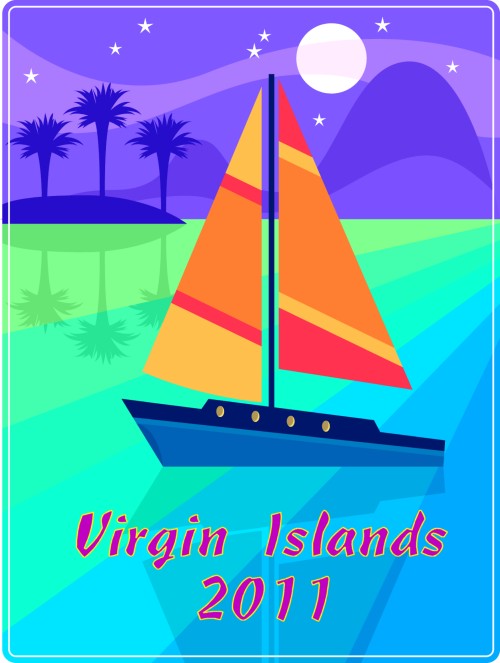 |
Although you do have to factor in
plane fare to Puerto Rico (about $300 from Houston), the
price of the cruise fare is actually priced less than our
Western Caribbean trips out of Galveston.
The first half of our trip takes us
to the Eastern Caribbean. In addition to two stops in the
Virgin Islands - St. Thomas and St. Croix - we also visit
Antigua.
The second half of our trip takes
us to the Southern Caribbean, commonly known as the West
Indies. Here we visit St. Lucia and Grenada.
|
Pricing |
|
Inside
Cabin, Category N |
$559 |
|
Oceanview
Cabin, Category H |
$729 |
|
Balcony
Cabin, Category E1 |
$929 |
|
Prices
are per person, double occupancy |
|
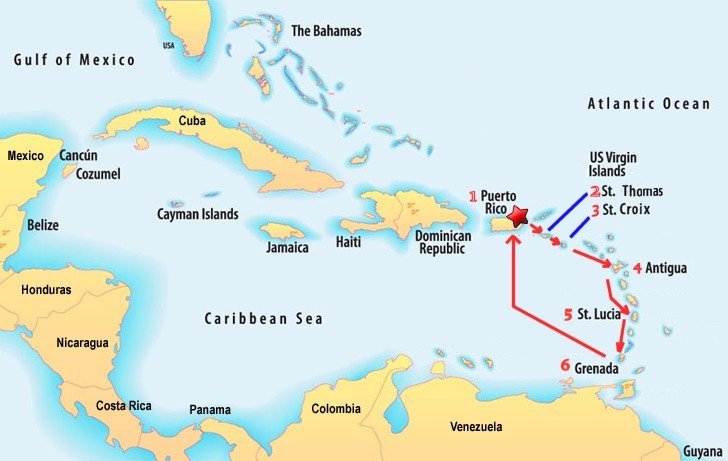 |
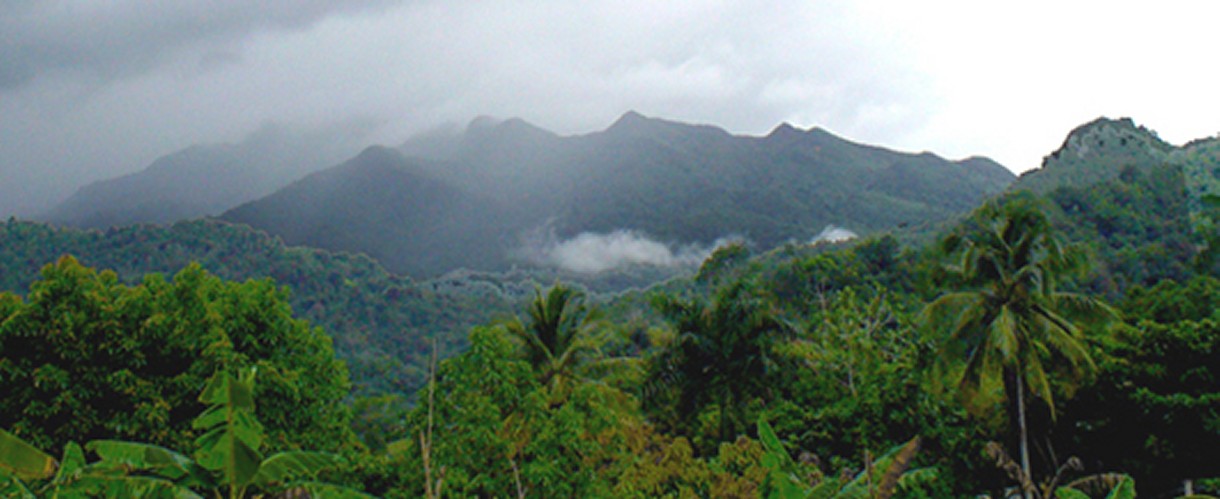 |
1 San Juan, Puerto Rico
|
|
Puerto Rico is one of the largest islands in the Eastern Caribbean.
Puerto Rico's landscape encompasses mountains, underground caves,
coral reefs, white-sand beaches and an incredibly massive rain
forest that supplies fresh water to most of the island. At the same
time San Juan, the capital of the commonwealth, is a big city with a
bustling business district, glitzy resorts and casinos, as well as
one of the most stunning examples of colonial life in the Western
world.
San Juan is known as "La Ciudad Amurallada" (the walled city). San
Juan was founded in 1521. In 1508 Juan Ponce de León founded the
original settlement, Caparra, now known as Pueblo Viejo, behind the
almost land-locked harbor just to the west of the present
metropolitan area.
A year later, the settlement was abandoned and moved to the site of
what is now called Old San Juan. San Juan is one of the biggest and
best natural harbors in the Caribbean and is the second oldest
European-founded city in the Americas
San Juan is a major port and tourist resort of the West Indies and
is the oldest city under the U.S flag. The metropolitan area known
as San Juan has 3 distinct areas: Old San Juan, the Beach & Resort
area, and other outlying communities, the most important: Río
Piedras, Hato Rey, Puerta de Tierra, and Santurce.
Many believe San Juan is a small Spanish colonial town with but a
few bustling avenues. However this impression does not aptly
describe the breath and depth of this fine old-world city.
Modern-day San Juan encompasses a vast metropolis that covers seven
unique and distinct districts. This makes for an eclectic
combination of sights and sounds that is essential to the wonder and
joy of visiting San Juan.
Old San Juan/Puerta de Tierra
This is a 465-year-old neighborhood originally conceived as a
military stronghold. Its 7-square-block area has evolved into a
charming residential and commercial district. The streets here are
paved with cobbles of adoquine, a blue stone cast from furnace slag;
they were brought over a ballast on Spanish ships and time and
moisture have lent them their characteristic color. The city
includes more than 400 carefully restored 16th- and 17th-century
Spanish colonial buildings. The Old San Juan attracts many tourists,
who also enjoy the gambling casinos, fine beaches, and tropical
climate. More tourists visit San Juan each year than any other spot
in the Caribbean. A leisurely foot tour is advisable for those who
really want to experience this bit of the Old World, especially
given the narrow, steep streets and frequently heavy traffic. To
really do justice to these wonderful old sites, you'll need two
mornings or a full day.
Old San Juan has several plazas: Plaza de San José is a favorite
meeting place for young and old alike. At its center stands the
bronze statue of Ponce de León, made from a British cannons captured
in during Sir Ralph Abercromby's attack 1797. The plaza is skirted
by a number of historic buildings.
Abutting Plaza San José is the Plaza del Quinto Centenario
(Quincentennial Square), opened in October 12, 1992. This plaza is
the cornerstone of Puerto Rico's commemoration of the 500th
anniversary of Columbus' discovery of the New World, has a sculpture
that rises 40 feet. The monumental totemic sculpture in black
granite and ceramics symbolizes the earthen and clay roots of
American history and is the work of Jaime Suarez, one of Puerto
Rico's foremost artists.
Plaza de Armas (arms square) is Old San Juan's main square, on San
José Street. Features four statues representing the four seasons;
all are over 100 years old. It was carefully planned as the main
city square and has served as a social meeting place for
generations.
Plaza de Colón (Columbus square) was originally called St. James
Square was renamed in 1893 to honor Christopher Columbus on the
400th anniversary of his discovery of Puerto Rico; bronze tablets at
the pedestal of the Columbus statue record important episodes in the
explorer's life.
Plazuela de la Rogativa (plaza of the procession) was built in 1971,
features a modern sculpture depicting a procession of religious
women commemorates an event that took place on the site in 1797.
During the spring of that year, a fleet of British ships led by
under Sir Ralph Ambercrombie sailed into San Juan Bay, meaning to
launch an assault on the city and take control of the colony. When
the attack was foiled, they undertook a naval blockade of San Juan,
hoping to starve the residents into submission. As the towns people
began to despair of any help from soldiers garrisoned in the inland
towns, the governor ordered a rogativa, or divine entreaty, to ask
the saints for assistance. The women of the town formed a procession
through the streets, carrying torches and ringing bells. The
British, hearing the commotion and seeing the moving lights, decided
that reinforcements had arrived and quickly sailed off.
The Plaza de Hostos is located near La Casita, features artisan
displays, snack stands, and traditional piragüeros, who sell shaved
ice topped with tropical fruit syrup.
Paseo de la Princesa
Paseo de la Princesa skirts the curved walls of the old city,
greeting tourists with shops, cafes and a delicate fountain along
its shoreline path. One of the most pleasant San Juan attractions,
the street is a nice way to take in the Caribbean sun on an
afternoon stroll. Lined with flowers, statues, palm trees and all
sorts of things you'd expect on a stylish little street, Paseo de La
Princesa connects the port to the city gate.
From the path laid out by Paseo de la Princesa, Old San Juan shines.
The promenade is home to a large number of cultural events, and a
wealth of people enjoying the midday ritual of a glass of Piragua, a
tasty mix of ice and tropical fruit syrups. You definitely won't be
the only person drinking one.
Paseo de la Princesa Old San Juan offers views of nearby Isla de
Cabras that is home to an old Spanish prison. A fountain marks the
street's end. The prison is now home to Puerto Rico's tourism
headquarters. But the imposing fortress walls that line the street
seem unchanged since the day they were constructed. Much like the
nearby El Morro and the most popular San Juan attractions, this
street is steeped in the city's colonial history, with its 1600s
architecture fully preserved.
Another of the San Juan attractions found on Paseo de la Princesa is
the Racies/Roots Fountain. Full of bronze statues celebrating the
city's rich cultural heritage, it's often the stopping point for
couples and/or partiers, (depending on the time of night). The
terraced decks nearby are perfect to take in the ever-changing San
Juan scene, and are often the site of musical performances
throughout the week. Another attraction along the pathway is one of
the original six gated passageways, known as the Puerta de San Juan
- of the six, it's the only one remaining.
The Paseo de la Princesa has become such a staple of tourism in San
Juan that the promenade has been further developed in the past ten
years, offering wondrous looks of El Morro and panoramic views of
the port, rocky cliffs and the rest of the city. But it's the
original half of the pathway tracing the old city walls that brings
in the majority of tourists. Of all the attractions in the Old San
Juan, this is one of the most visited spots because what you see
changes with the time of the day. Whether it's the sunset
performances, sun-drenched views or midnight strolls that you would
like to see, the Paseo de la Princesa is a great place to get
acquainted with the city of San Juan.
Forts
El Morro, the word itself sounds powerful and this six-level
fortress certainly is. Begun in 1540 and completed in 1589. San
Felipe del Morro was named in honor of King Phillip II. Most of the
walls in the fort today were added later, in a period of tremendous
construction from the 1760's-1780's. Rising 140 feet above the sea,
its 18-foot-thick wall proved a formidable defense. It fell only
once, in 1598, to a land assault by the Earl of Cumberland's forces.
The fort is a maze of tunnels, dungeons, barracks, outposts and
ramps. El Morro is studded with small, circular sentry boxes called
"garitas" that have become a national symbol.
The views of San Juan Bay from El Morro are spectacular. The area
was designated a National Historic Site in February of 1949 with 74
total acres. It has the distinction of being the largest
fortification in the Caribbean. In 1992, the fortress was restored
to its original historical form in honor of the 500th anniversary of
Christopher Columbus' discovery of Puerto Rico. El Morro Fortress is
a National Historic Site administered by the National Park Service.
The fort is open to the public daily from 9am to 5pm
Castillo de San Cristóbal (San Cristóbal Fort) is El Morro's partner
in the city's defense. Built in 1634 (completed in 1771), was
considered the Gibraltar of the West Indies. San Cristóbal was
supported by a massive system of outworks that provided defense in
depth and is one of the largest defenses ever built in the Americas.
It rose 150 feet, covering 27 acres of land. As if its size and
height weren't sufficient to intimidate enemies, its intricate
modular design was sure to foil them. A strategic masterpiece, it
features five independent units, each connected by moat and tunnel;
each fully self-sufficient should the others fall. Open daily from
9am to 6pm
The Fuerte San Gerónimo (San Gerónimo Fort) was built on the
opposite end of San Juan to strengthen the city's defenses. The fort
is located behind the Caribe Hilton Hotel, with small military
museum in Puerta de Tierra.
The Santa Elena Battery building with a long chimney-topped bunker
was the formal army storage area.
Parks
The Parque de las Palomas (pigeon park) is located at the top of the
city wall, this park overlooks the restored La Princesa Jail, now a
government office with an attractive art gallery. The park is the
perfect spot from which to enjoy a magnificent view of the harbor,
city and mountains.
The Muñoz Rivera Park is an spacious ocean side park with large
trees, landscape gardens and wide walks, located on Jesús T. Piñero
Avenue. The park is open Tues-Sun 9:00am - 5:00pm.
Other parks include: Martí Coll Linera Park, and Central Park (with
facilities for jogging, baseball, calisthenics and tennis).
El Yunque Rain Forest
When you're in San Juan, don't miss the opportunity to witness the
pinnacle of natural beauty by exploring Puerto Rico's El Yunque Rain
Forest. It features more than 240 species of trees, hundreds of
miniature orchids, and what was once believed to be the Fountain of
Youth.
El Yunque Rainforest is located 25 miles southeast of San Juan. It
hosts a number of unique plant and animal species such as the
endangered Puerto Rican Parrot and the tiny coquis (indigenous tree
frogs) that serenade the evening hours. It is a very gentle forest.
In fact, there are no poisonous snakes! The El Yunque Rain Forest is
a cool, mountainous, sub tropical rainforest located on the Eastern
side of the Luquillo Mountains. The actual rainforest is at the top;
you must drive to the top of the road and hike up to see the cloud
or dwarf forest.
The intrigue of visiting the El Yunque rain forest is only partly in
the observation of the varieties of plants that have managed to grow
and adapt to the copious amounts of year round rainfall and winds
near the top. The magic of El Yunque is in the pristine beauty, the
sounds, the quietness and the serenity
Condado Beach
El Condado, as the locals say, is the island's most glamorous
district, featuring boutiques, a variety of restaurants, and some of
the finest hotels on the island. Contrary to popular belief, many
nationals do reside here in the exquisite turn-of-the-century
mansions. You'll notice the populace on any given day to be a good
balance between tourists and locals. If you are an avid jogger,
you'll love the expanse of open area.
Isla Verde
Isla Verde is home to high-rise apartment buildings, huge clubs and
luxurious hotels. This area is actually part of the municipality of
Carolina, connected to San Juan via several highways and streets. It
spans from the Punta Las Marías area (adjacent to Ocean Park) to the
land just beyond the International Airport. Its nightlife is
exciting, and the enormous balneario, or public beach, is where
locals and guests come to sunbathe and get their fill of
people-watching.
Hato Rey
Hato Rey is several miles from Old San Juan but is easily
accessible. It is the island's central commercial district, where
the local wheelers and dealers conduct their business. Thus, its
restaurant scene caters to more business people than anywhere else
on the island. Roosevelt, the district's residential area, can be
found just off Highway 52. It is one of the most famous venues for
nightlife in San Juan, and the Plaza Las Americas, the Caribbean's
largest mall, is also located here.
Santurce/Miramar
Both the Santurce and Miramar districts are located just off Condado
and Old San Juan, but north of Hato Rey. Santurce was originally an
upper-class neighborhood and entertainment. Today, there are office
buildings and abandoned structures with a small but very good
marketplace (Plaza del Mercado). A major campaign is under way by
City Hall to restore the sector's vitality.
Río Piedras
This district is known as University City because it houses the
University of Puerto Rico. Visiting Río Piedras is enlightening for
those who want to explore the real Puerto Rico first-hand. The
district has a traditional Plaza del Mercado and a very hometown
atmosphere.
|
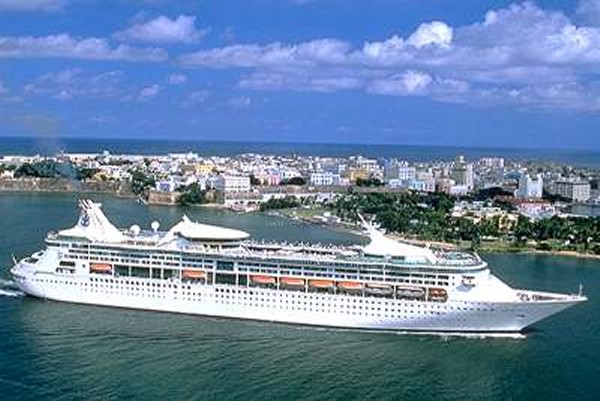
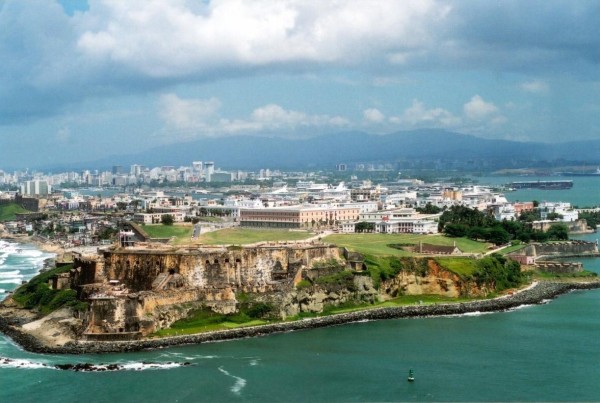
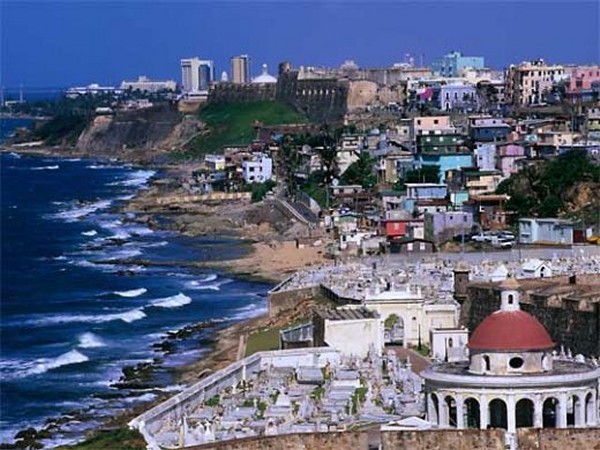
Old San Juan/Puerta de
Tierra
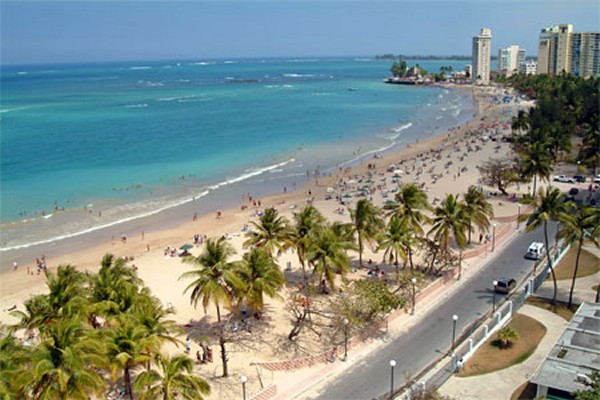
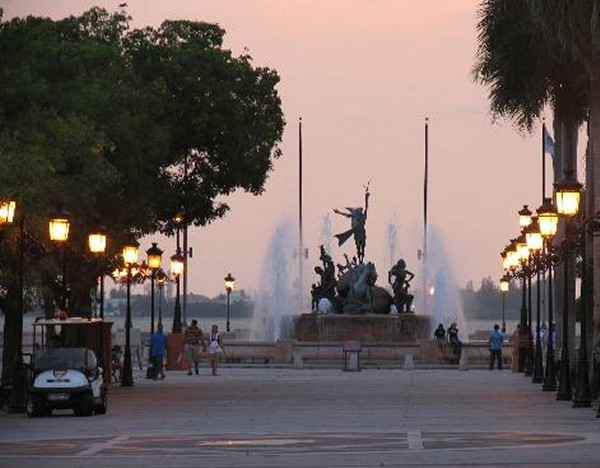
Paseo de la Princesa
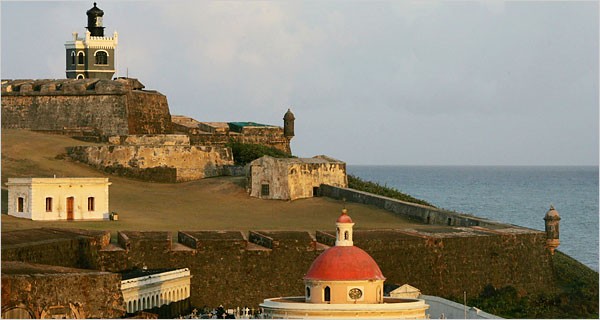
El Morro Fortress
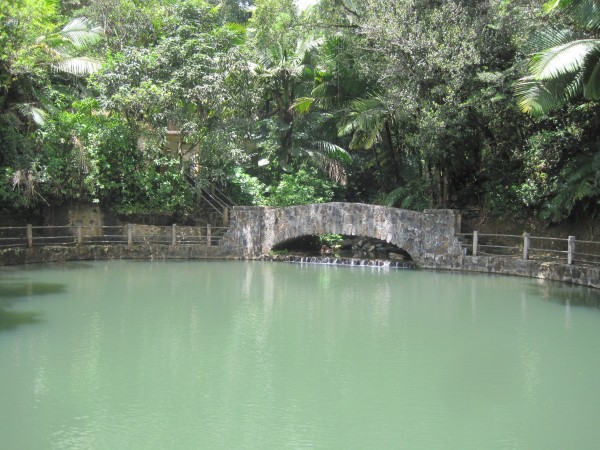
El Bano
Grande
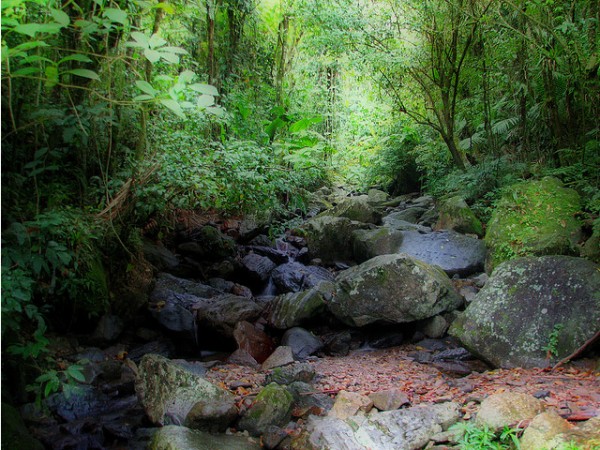
El Yunque
Rain Forest

El Yunque
Rain Forest

El Yunque
Rain Forest
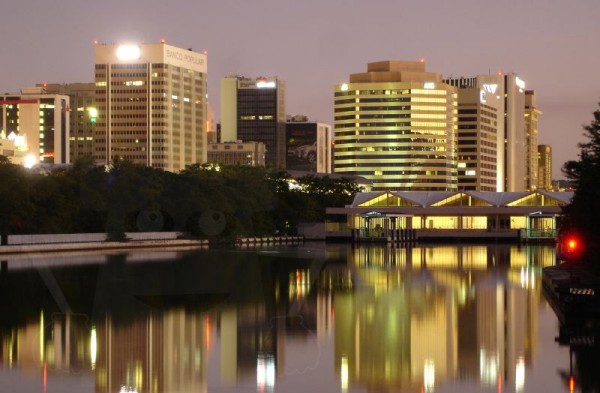
Hato Rey |
2 Charlotte Amalie, St. Thomas
in the US Virgin Islands
|
|
St Thomas is the most developed and most cosmopolitan of the US
Virgin Islands. Though it’s only 32 square miles in size, St.
Thomas has a million miles worth of things to do.
Go shopping and sailing, snorkeling and sightseeing, or diving and
dining. Enjoy the island’s world-renowned golf course,
picture-perfect beaches and spectacular nightlife. Take the Skyride
700 feet above the city or climb the famous 99 Steps of Charlotte
Amalie for an incomparable view of the Caribbean.
If you’re interested in culture and history, don’t miss seeing the
second-oldest synagogue in the Western Hemisphere, the 1680-built
Fort Christian or the childhood home of Camille Pissarro, one of the
best-known French Impressionists. St. Thomas's history and
culture alone are worth a visit to the island. Fort Christian, a
U.S. National Landmark, is the oldest standing structure in the
Virgin Islands and home to the Virgin Islands Museum, where early
island memorabilia and old maps trace the islands' history. Market
Square, a bustling produce marketplace, was once one of the West
Indies' busiest 18th-century slave markets.
Historic buildings found throughout downtown Charlotte Amalie take
visitors back to the Danish era when the town was a bustling port of
trade; while modern additions of taxis, shops, souvenir vendors and
cruise ships in the harbour remind that it is tourism that currently
drives the economy.
Also of interest is the Synagogue of Beracha Veshalom Vegmiluth
Hasidim, the oldest synagogue in continuous use in the United
States. On nearby Government Hill, looming over Charlotte Amalie,
stands Blackbeard's Castle. Known during colonial times as
Skytsborg, this 17th-century fortified tower also serves as a
popular restaurant and hotel.
Located in the hills not far from the heart of Charlotte Amalie,
Government House has been the center of government in St. Thomas
since the mid-1860s. Visitors interested in seeing St. Thomas's
political life may tour the building's first two floors. The 99
Steps, made by bricks that were once used as ballast on Danish and
British ships, were built into the hillside to keep the orderly grid
of the city intact.
St. Thomas is largely mountainous. Many roads around the island
offer terrific panoramic views of the island and ocean. Amongst the
hills on St. Thomas and along the beaches you will find an
assortment of accommodations; resorts, historic inns, guest homes,
vacation homes, villas and condos,
St. Thomas is a water lover’s paradise. If you prefer, relax on the
beach, snorkel, and scuba dive, windsurf, and kite board, sail,
fish, kayak or parasail. The underwater world in the
Virgin Islands is stunning and truly amazing! Explore corals and
gorgonian forest of sea fans and sea whips. Dive around caves,
explore sunken boat wrecks or take a night dive and explore the
fantastic world of nocturnal marine life! Swim among turtles, bright
parrotfish, blue tangs, schools of fry and so much more.
On land you can play a round of golf, take an island tour, check out
some attractions, take in the historical sites downtown, explore a
colonial church or do some shopping.
Due to the Virgin Island’s unique history and picturesque setting,
you will find an experience unlike anything else in the Caribbean.
The population in the US VI is largely made up of Caribbean people
whose ancestors were Africans and Europeans. You will find people
from all across the Caribbean living in the Virgin Islands as well
as Americans from the mainland, Europeans and Hispanics.
English is the main language in the US VI and the majority of the
population speak, write and read English only. Some residents speak
quickly and with an accent making it difficult to understand.
Emigrants from other islands have brought other languages to the
Virgin Islands therefore it is not uncommon to hear Spanish,
French-Patois and Creole.
Music in the Virgin Islands is definitely Caribbean. You can hear
reggae, steel pan, calypso and soca. Many other music venues can be
enjoyed from Latin and blues to jazz and classical.
Virgin Islanders are religious people. Popular religions include
Baptist and Catholic.
Superstitions and storytelling are very common. There are often
stories about jumbies (spirits) that walk around in homes, on the
street and anywhere the person telling the story wants them to be.
Jumbie stories are a Caribbean tradition and are often used as
cautionary tales for children. Bru Nansi, a spidery-man who prevails
in the most adverse circumstance, is a popular story character.
In the Virgin Islands saying Good Morning, Good Afternoon and Good
Night are not the same thing as saying Hello or Hi; the former is a
warmer greeting and is the norm for friends and strangers.
While visiting the islands take your time to appreciate the local
arts, events and music. Definitely try some local food, deserts and
drinks, you will enjoy them. Make your vacation a true Caribbean
experience by enjoying the local culture!
The Virgin Islands were named by an explorer familiar to all of us
in the Americas--Christopher Columbus. After seeing the large number
of islands in 1493, he named the group Las Once Mil Virgenes in
honor of St. Ursula's 11,000 martyred maidens of Christian belief.
Although the islands have seen many flags, the chain is currently
split between the United States and Great Britain. The U.S.
purchased its share of the Virgin Islands paradise from Denmark in
1916 for $25 million. This was considered a huge sum to pay for
island real estate at the time. However, the U.S. government was on
the eve of World War and was concerned that Germany might take over
the islands from the Danes and use them as a base to prey on
shipping going through the Panama Canal
Our ship will visit the harbor of Charlotte Amalie, capital of St.
Thomas, than any other port in the West Indies. The beautiful
beaches and lots of opportunities for shopping draw the ships to the
12-mile long island. Vacationers discovered St. Thomas right after
World War II, and it currently has one of the highest standards of
living in the Caribbean.
You can walk into Charlotte Amalie and shop and see the city. For
getting around outside the city, the island has a bus service and
taxis are plentiful. The taxis are unmetered, so be sure that you
agree on a price before setting off with one. Many taxi drivers will
also serve as tour guides, and sometimes you can hire one for the
day. Again, agree on a price up-front.
The cruise ship will also
offer island tours as one of their shore excursions. Traveling up
into the mountains and looking down at the city, harbor, and cruise
ships below is quite a sight, and Magen’s Bay is one of the
prettiest bays in the Caribbean.
|
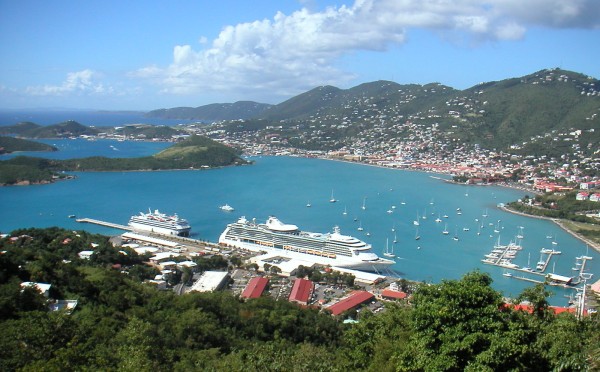
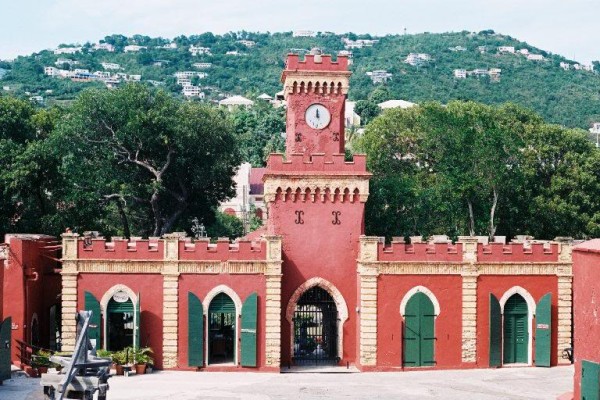
Fort
Christian
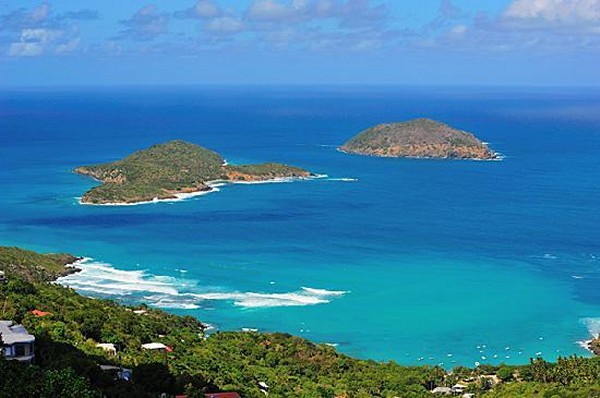
Scuba and
Snorkeling Paradise
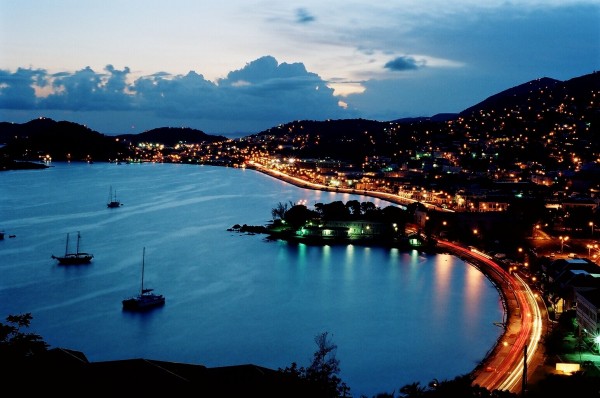
Charlotte
Amalie at Sunset
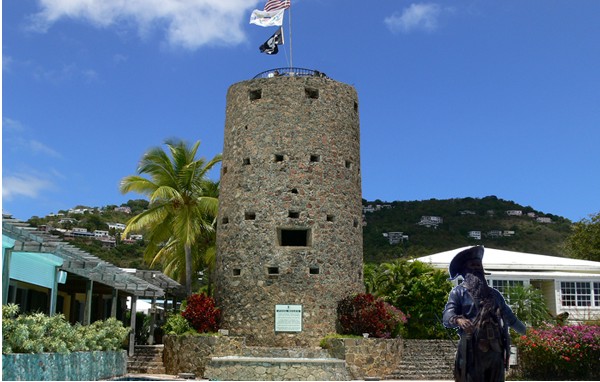
Blackbeard's Castle |
3 St. Croix, US Virgin Islands
|
|
St Croix is the largest of the United States Virgin Islands, 84
square miles in area. The beautiful island of St. Croix is the
largest of the 3 inhabited US Virgins Islands (St. Thomas and St.
John are the other two). In fact, it is about three times the size
of St. Thomas, however, it only has a population of about 60,000
residents, about the same as St. Thomas. This gives visitors to the
island a lot more breathing room!
St. Croix lies approximately 40 miles south of St. Thomas and St.
John, and is separated from them by a deep oceanic trench...the
deepest in the Atlantic basin! St. Croix has beautiful white sand
beaches with warm, crystal clear waters. All beaches on the island
are open to the public.
St. Croix, US VI,
offers everything you would expect from a Virgin Island...lush green
hills, warm aquamarine water, sugar white sand beaches, fabulous
weather, great dining and duty free shopping, incredible SCUBA
diving, three golf courses.
St. Croix is a paradise for water and sports
enthusiasts, offering every activity from sailing and motor
yachting, snorkeling including Buck Island snorkeling tours,
swimming, and SCUBA diving to riding wave runners, Jet Ski, water
skiing, kayaking, parasailing, windsurfing, sailing, sport fishing,
horseback riding, tennis, golf and bicycle riding.
Whether you are an avid athlete or just
someone that wants to enjoy a fun day in the sun and water, you will
find that land and water activities on St. Croix are plentiful. St
Croix has awesome water temperatures that average 80 degrees year
round, making a day in the water even more enjoyable!
Many
Loyalties
Saint Croix has flown seven different flags. Spain, Great Britain,
the Netherlands, France, the Knights of Malta, Denmark, and the
United States have all taken turns colonizing
the island.
The Cruzan Rum factory
(see picture) is based on St. Croix and Diageo, the world's
leading spirits, wine and Beer Company, is constructing a high
capacity distillery on the island. The new facility will produce
bulk rum beginning in 2011. Beginning in 2012, the distillery will
supply all bulk rum used to make Captain Morgan branded products for
the United States.
Christiansted
There are two distinct towns to visit: Christiansted and
Frederiksted. Each has its own distinctive style; together that is
the Twin Cities, a must-see. The architectural quality and historic
interest of the one-time Danish West Indies capital has made part of
Christiansted (founded in 1734) a National Historic Site.
Christiansted is on the north shore of the island, just a little
east of center, and is filled with historic buildings displaying the
greatest example of Danish architecture outside of Denmark! The
picturesque harbor town of Christiansted attained its present state
by the late 1700s, when St. Croix was a crown colony of Denmark and
the city was one of the Caribbean's major ports.
The U.S. National Park Service maintains the neoclassical-style
buildings as they appeared in the 1830s through the 1850s, the
period following the peak of prosperity for the island's sugar,
cotton, rum and slave trades. Many street signs are still in Danish.
In Christiansted, you can shop the day away through quaint shops
filled with French perfumes, china, crystal, batik clothing and
jewelry. A boardwalk follows the harbor's edge that offers many
great places to eat and drink as well as several small hotels. A
great place to watch the seaplane takeoff and land on it's way to
and from St. Thomas.
Frederiksted
Frederiksted has its share of shops and shopping. It also has a
tropical Rain Forest and Whim Greathouse, a plantation restored to
the way it was in the 1700s. Frederiksted has charming "gingerbread"
Victorian architecture and is experiencing a renaissance of sorts,
since cruise ships began calling on the port again in 2008. Fort
Fredrik dates back to 1700 and is the site where Governor General
Peter Van Scholten read the proclamation abolishing slavery on the
island in 1848. Today the fort houses a museum.
The area right in front of the Frederiksted fort and waterfront has
been made into a beautiful town park. Frederiksted has a beautiful
waterfront that draws cruise ships and visitors from around the
globe.
Salt River
Moving west along the North Shore, visit the west side of Salt River
where Columbus' crew landed in November of 1493. Christopher
Columbus is credited as the first European to discover the island in
1493, landing at Salt River on the central north coast, in search of
fresh water. He didn't find any as Salt River, as it is now known,
was just an inlet from the sea that resembled the mouth of a river.
Rain Forest
There can be small running streams/rivers
in the rainforest, depending on how much rain there has been, but
nothing navigable. The far eastern part of the island is more arid
and you will even find cactus plants growing up to 15 feet high on
the hills. Even though the island is only 27 miles long, east to
west, the western half is lush with beautiful green hills including
a small rainforest, while the East end is much more arid. There are
wonderful white sandy beaches all around the island.
Historic plantations from the days when slavery and agriculture
drove the economy are scattered throughout the island. Estate Whim
Plantation, located on the west end of the island, is a great
example of one these plantation & "great houses". With large areas
of rolling green hills and expanses of fertile flat land on the
south central area of the island, St. Croix's plantations also grew
many other crops that are still prominent in Caribbean cuisine.
When the slaves used by the plantation
owners were freed, the sugar industry rapidly declined and tourism
became the most important part of the economy on the island...it
remains that way today. The ruins of dozens of sugar mills are
scattered all over the island, a vivid reminder of the island's
past.
Buck Island
National Wildlife Refuge
St Croix also has great duty free shopping areas and a variety of
activities and water sports, enough to keep visitors very
entertained. Among it's natural attributes are natural reserves for
plant and animal life including Buck Island Reef National Monument,
with an underwater snorkeling trail, Sandy Point National Wildlife
Refuge, a rainforest, and botanical gardens. Created among the ruins
of an 18th century sugar plantation the Botanical Gardens are a
wonderful place to visit.
The gardens are planted on 16 acres
containing over 1000 species of local and exotic tress and shrubs.
An interesting blend of history and flora and fauna awaits you at
St. George's Gardens. A rich history surrounds the location of the
gardens as they are built upon a pre-Columbus Indian settlement and
the ruins of a sugar plantation. A cactus garden, rain forest trail
and beautiful mahogany trees surround acres of tropical garden.
Buck Island Reef National Monument was established to preserve "one
of the finest marine gardens in the Caribbean Sea." The park is one
of a few fully marine protected areas in the National Park System.
The 176-acre island and surrounding coral reef ecosystem support a
large variety of native flora and fauna, including the hawksbill
turtle and brown pelican. Visitors to Buck Island can enjoy a
leisurely swim in the crystal clear waters, snorkeling or SCUBA
diving through the fantastic reef to witness tropical marine life.
At the eastern most point of the reef is
the famous underwater trail; both novice and expert snorkelers will
enjoy the passages through the reef. Those not wishing to get wet
may chose to hike over the island enjoying native flora and fauna
while getting a birds-eye view of the reef and sea below.
The lure of St. Croix's sun-drenched beaches is virtually impossible
to resist; they have been ranked among the most beautiful in the
world. Picture crescent moons of sugar-white sand rimming secluded
coves, lush tropical scenery and the sun reflecting diamond sparks
on crystal-clear aquamarine waters that about sums up what you'll
find on this island paradise.
|
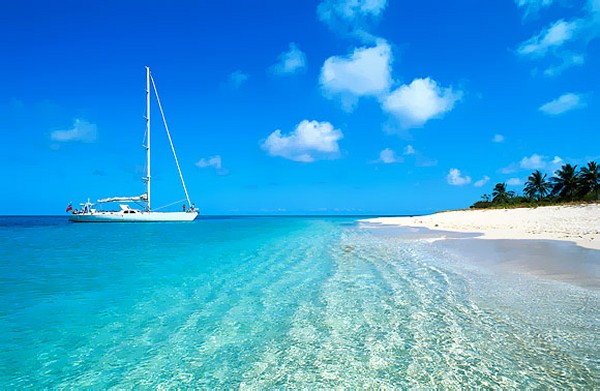
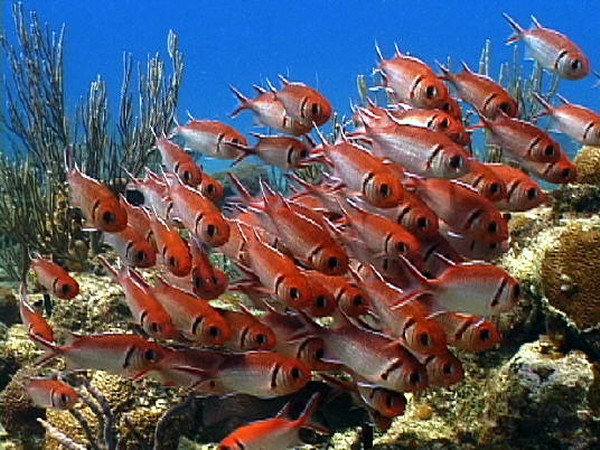
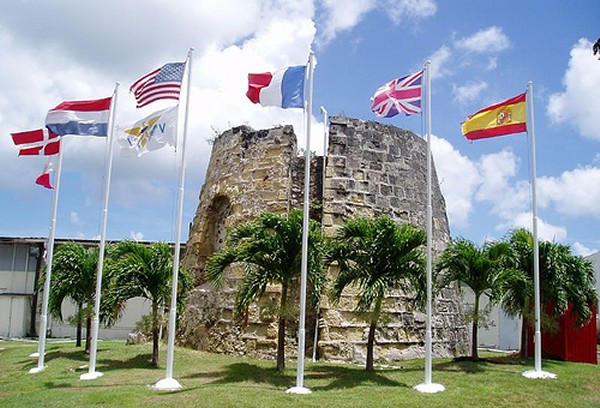
Cruzan Rum
Factory
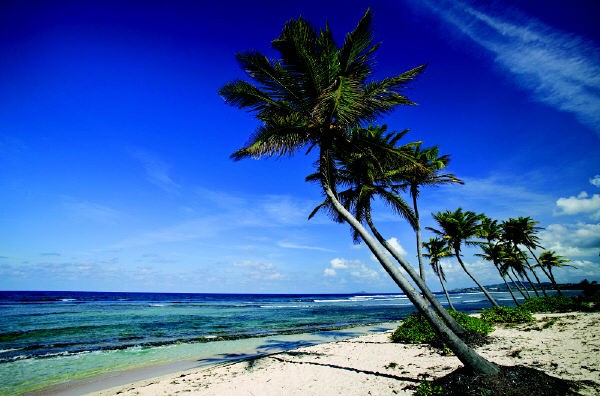
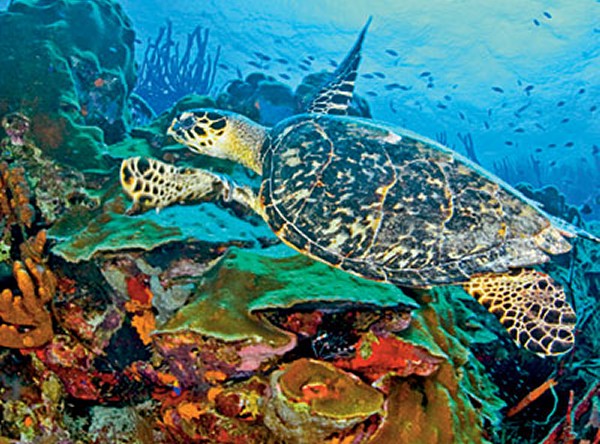

Buck
Island Waterfall |
The magnificently evocative white baroque towers of St.
John's Cathedral dominate the skyline of St. John's, the capital and
largest city of Antigua and Barbuda. Built in 1845, the church is
now in its third incarnation, as earthquakes in 1683 and in 1745
destroyed the previous structures. The towers are the first sight of
Antigua for about half of the island's visitors each year, many of
who arrive by boat. With its recently completed cruise ship dock and
several hotels; St. John's is a lively hub for shopping and dining.
Antigua, the largest of the English-speaking Leeward Islands, is
about 14 miles long and 11 miles wide, encompassing 108 square
miles. Its highest point is Boggy Peak (1319 ft.), located in the
southwestern corner of the island. Antigua is almost completely
surrounded by well-preserved coral reefs, walls, and shipwrecks. The
southern and eastern coasts are surrounded by shelf's, providing
excellent conditions for spectacular shallow diving and snorkeling.
There is little or no current in most places, and the water
temperature averages about 80 F (25 C). Underwater visibility ranges
from 50 to 140 feet, and tropical marine plants and animals are
diverse and plentiful.
Snorkeling is possible at many of both islands' most
beautiful beaches: one of Antigua's best-known offshore sites, Cades
Reef, is now partly contained in a designated underwater park.
Another popular destination is the wreck of the Andes, a
three-misted merchant ship that sank in 1905 and now rests in less
than thirty feet of water in (ironically enough) Deep Bay. Antigua's
dive facilities are far superior to those available on smaller
Barbuda, and so most of the sites that have been established as dive
destinations are Antiguan. The southern and eastern coasts are
considered to offer the most consistent diving; for more advanced
divers, the ledge of Sunken Rock on the south coast is a popular
site. Dive depths generally range from 25 to 80 feet and can reach
180 feet; distances from shore to site are in some cases no more
than five minutes and at most 40 minutes away.
There are various tourist attractions in St John's. Some of the
important sightseeing attractions of St John's are the following:
St John's Cathedral: It is the most dominating structure that you
can see in St John's. This large cathedral with its white baroque
towers got its present form in the year 1845 after it was twice
destroyed in the years 1683 and 1745. On the southern side of the
church, you would find iron gates flanked by pillars. On the
pillars, you would get the engraved figures of St John the Divine
and St John the Baptist. The Cathedral is dominated by twin towers
at the west end and provides a distinct baroque flavor. They are 70
ft high and the cupolas that crown the towers are aluminum in color.
At the time of erection, the edifice was criticized by
ecclesiastical architects as being like "a pagan temple with two
dumpy pepper pot towers", however in modern times the edifice has
been cited as "the most imposing of all the Cathedrals of the West
Indian Province".
Museum of Antigua and Barbuda: You would find this in the Court
House that was constructed in 1747. At first, there was a city
market housed here and it is oldest building still functioning in
the city. In the museum, you would find artifacts from the times of
the Arawak till the colonial rule. There are various archaeological
remains here. Here you would also find models of sugar plantations,
replica of a typical Arawak house and the cricket bat of Vivian
Richards, the famous cricketer from Antigua.
Government House is another important tourist attraction of St
John's. It is the official residence of the Governor General of
Antigua. You would find it located on the eastern edge of St John's.
You cannot but help appreciate the architecture of the building and
the beautiful garden surrounding the building. However, it is not
always open for public viewing and tours should be programmed only
after fixing an appointment.
Fort James: A must visit site, which was built in the year 1706 to
guard St John's harbor. It was one of the forts built by the British
in the 18th century. It overlooks the town and you can see a powder
magazine, several cannons and the remaining of the fort wall on your
visit. From here you can also have a beautiful view of the
surrounding harbor.
The other sites of St John's include the farmer's market,
which is located on the southern edge of the city. The Antigua Rum
Distillery, which is located at the citadel and the St John's
Cricket Ground are also worth visiting.
The major places of shopping in the city of St John's are the Cruise
Ship Dock, where several ships dock every week and you will get to
shop some of the fresh items right from the ships. Heritage Quay is
the place to be when visiting Antigua's capital city of St John's.
The largest and modern of two Quays in St John's, Heritage Quay is a
shopper's paradise, offering two floors of a wide array of duty and
tax free merchandise, for travelers looking to cash in on amazing
value and savings from retail prices of the Europe and USA.
Electronics, local music, cigars, liquors, fine crystals & china,
designer clothing & footwear, swimwear, sporting equipment,
fragrances, skin care cosmetics, fine jewelry, high end watches and
other souvenir items are just a sample of the goods available.
There is also a wide selection of sports bars & specialty
restaurants around to grab a tropical drink after a day of shopping
fun. Duty-Free shopping in Antigua and Barbuda is easy, unlike other
Caribbean islands there are no restrictions on shoppers, just
provide a proof of your status as a traveler e.g. Seapass and some
form of personal identification and make your purchase - it's that
simple. Heritage Quay also offers visitors a breathtaking view of St
John's Harbor, which comes alive with local and steel pan music,
when cruise ships are docked at the finger piers of the harbor. The
complex also houses two hotels and a photo-centre.
The Heritage Quay Shopping Centre is branded for offering luxurious
items at duty free prices. The Vendor's Mall houses items of local
craftsmen.
The Redcliffe Quay apart from offering several shopping options also
offers restaurants. Redcliffe Quay overlooks the harbor on one side,
and is one of the oldest parts of St. John's. The restored Georgian
buildings are painted in a myriad of bright and vibrant colors.
There is a yacht marina there now, but this was the main trading
place for slaves, rum, sugar and coffee between Antigua, Europe and
Africa. The quayside has a variety of old dockside warehouses
converted into shops selling gifts, pottery, paintings, and other
locally made gifts, as well as clothes, shoes and accessories.
At the northeastern point of Antigua there is a remote wild area
known as Indian Town Point. The area was legally constituted as a
National Park in the 1950's. Within the park there is a remarkable
example of seawater erosion. Geological, Devil's Bridge is a natural
arch carved by the sea from soft and hard limestone ledges of the
Antigua formation, a geological division of the flat northeastern
part of Antigua. A bridge was created when a soft part of the
limestone eroded away by action of Atlantic breakers over countless
centuries.
Sammy Smith, a 104 year- old Antiguan patriot had the answer. Here
is a quote from his memoirs "To shoot Hard Labor". "On the east
coast of the island is the famous Devil's Bridge. Devil's Bridge was
called so because a lot of slaves from the neighboring estates use
to go there and throw themselves overboard. That was an area of mass
suicide, so people use to say the Devil had to be there. The waters
around Devil's Bridge are always rough and anyone who has fallen
over the bridge has never come out alive".
If you're seeking a pretty stretch of sand in a secluded setting,
head to Half Moon Bay. Half Moon Bay is
on Antigua's southeastern coast. It stretches for almost a mile and
is known as one of the island's most beautiful beaches. The area is
a national park and is located along the Atlantic Ocean where seas
can be rough. Fortunately, a large reef calms the waters and
protects the shore. Although Antigua has beaches that are more
secluded than Half Moon Bay the mix of natural beauty, personality
and atmosphere available at this location might be just what the
doctor ordered. The beaches found throughout Antigua are often quiet
beaches, however, Half Moon Bay offers something unique. If you
decide to check out this beach, you will enjoy escaping the buzz of
city life.
|

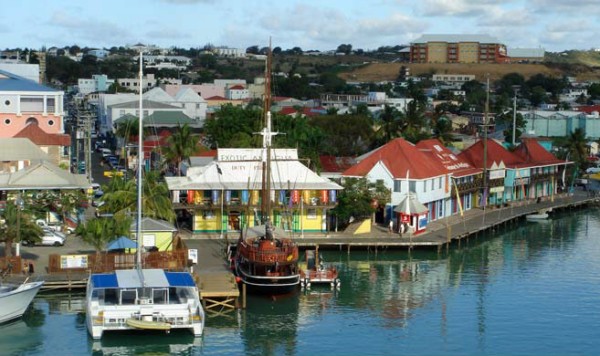
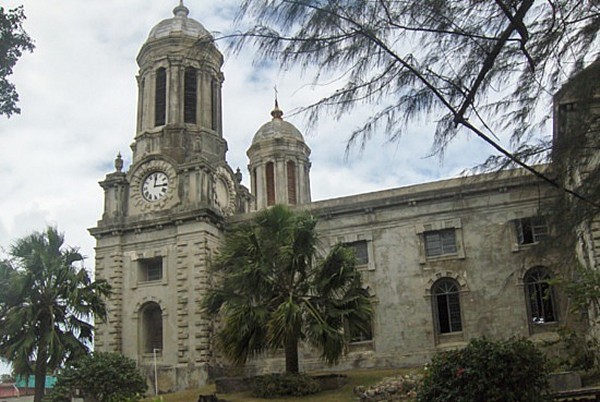

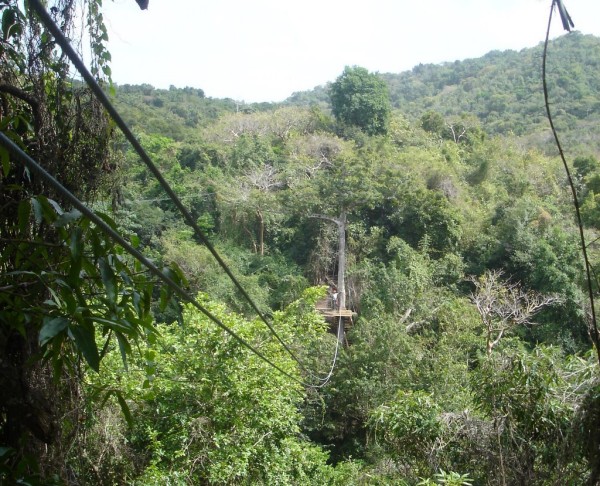
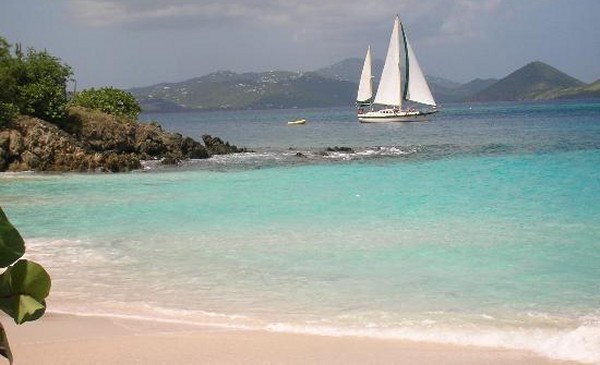 |
Saint Lucia is the perfect port stop, whether you're after romance,
rejuvenation or adventure.
The natural landscape of gorgeous palm-fringed beaches, miles
of unspoiled rainforest and the majestic Piton Mountains
is sure to indulge every taste.
Some people say that St.
Lucia is the Hawaii of the Caribbean. With many natural
waterfalls,
mountains, gorgeous beaches and
breath-taking views, it is pretty easy to see why
the comparison to Hawaii makes sense.
Water Water
Water
Water sports are a way of life on this island, where natural harbors
and bays frequently interrupt a coastline of rain-forested
mountains. The island boasts some of the best underwater dive sites
in the Caribbean. Imagine the crystal clear, warm waters. Picture
the fine white sand beaches, lined with gently swaying palms. Where
better to go windsurfing, sailing, parasailing or water-skiing than
Saint Lucia?
Saint Lucia is a diving paradise. The island is at the tip of an
underwater volcano where both beginner and experienced divers alike
will enjoy the stunning variety of coral, sponge and marine life.
Artificial reefs have developed around a number of sunken ships that
have become home to huge gorgonians, black coral trees, gigantic
barrel sponges, purple vase sponges and black lace corals. Exciting
Caribbean diving trips will reveal turtles, nurse sharks, seahorses,
angel fish, and golden spotted eels, to name but a few, among the
dazzling cross section of Caribbean marine life. Divers from all
over the world know the exotic beauty and warm crystal waters of
Saint Lucia. A great deal of care has been exercised to ensure that
the island, as well as the surrounding water remains as pristine as
it was a generation ago when it first began attracting divers in
search of a paradise less traveled.
As mountainous below sea level as it is
above, Saint Lucia offers incomparable sightseeing for divers who
are drawn to the tremendous variety that nature has to offer: huge
gorgonians, black coral trees, gigantic barrel sponges, purple vase
sponges and lace coral. Angelfish, black beauties, golden spotted
eels, seahorses, Stingrays, nurse sharks, turtles and many varieties
of schooling fish are as plentiful as they are colorful and varied.
A few submerged shipwrecks and a mysterious serpentine creature of
mythical proportions known as "the thing" add to the excitement of
diving in the waters of Saint Lucia.
Not interested in lazing on the beach all day long day after day?
There are a number of nature trails that offer a wide array of
hikes. Some are more strenuous than others. In the mountainous
rainforests of Saint Lucia there are approximately 30 species of
birds. You may be lucky to spot the rare and beautiful parrot,
Jacquot. Exploring the beauty of Saint Lucia's majestic rain forest
is a great way to relax and appreciate the island. A variety of
natural trails lead hikers through the rain forest, to the top of
Saint Lucia's mountains, through old plantation grounds, along
beaches, to Cactus Valley, to Pigeon Island and more. You will see
spectacular rain forest waterfalls, flora and local birds like the
Saint Lucia Parrot, the Saint Lucia Oriole and the Saint Lucia Black
Finch. Comfortable shoes are a must.
Deep in Saint Lucia's mountainous, tropical islands interior almost
1,800 feet above sea level, lay 19,000 acres of rainforest and the
29 miles of trails that run through it. The rainforest is respected
as a habitat for rare birds and plants, a world where lushness is
overpowering, where elusive parrots squawk overhead, orchids scent
the air, hummingbird buzz near brilliant heliconia and climbing
palms encircle tall trees like lovers in a parting embrace. It has
taken centuries for Saint Lucia's tropical island rainforest to
become its current well-developed refuge. Nonetheless, two thousand
years ago, Arawak tribes associated the dark woods with evil spirits
and for centuries the forest remained untouched and the spirits the
Amerindians feared evolved into island folklore.
Biking has also become popular way to enjoy the island, and there
are some excellent biking tours for beginners and the more
experienced off road riders. There' is a lot to see on 2 wheels in
Saint Lucia. For the adventurer, head into Soufrière for an
ocean-side trail ride at Anse Chastanet. With a beautiful view of
the world-famous Gros Piton and Petit Piton mountains, this is one
ride you can't find anywhere but Saint Lucia.
The ambiance of Saint Lucia can be captured through a number of
horseback riding excursions. The International Riding Stables offers
an assortment of trail rides, including a ride winding through the
countryside along the beach, with time for swimming and a beach
picnic at Cas en Bas. Trim's Riding Stables offer a variety of treks
including a carriage tour to Pigeon Point and Fort Rodney. Trek the
lush trails of Saint Lucia, canter along almost deserted beaches on
horseback and revel in pure serenity. Cantering a horse along a
stretch of beach on the Atlantic coastline with the tropical wind
whipping your face and eager mount springing forth uncoaxed. Touring
Saint Lucia on horseback will enable you to truly take in the sights
and feel part of the surrounding giving you a chance to take in more
of the interesting aspects of the country.
Saint Lucia is recognized as one of the leading whale watching sites
in the area. Over 20 species are regularly spotted throughout the
year, including humpbacks, pilot whales, sperm whales and spinning
and spotted dolphins.
Turtles are another fascinating thrill for nature-lovers. The
abundance of these majestic reptiles on Saint Lucia is due to the
protection provided by local environmental activists, who have
ensured there is a permanent suspension on turtle hunting.
With the sparkling Caribbean Sea on one side and the mysterious
depths of the Atlantic Ocean on the other, sailors and fishermen
will fall in love with Saint Lucia. Saint Lucia offers opportunities
for some of the best deep-sea fishing in the world. Described as "an
angler's dream come true", it is home to several species of big game
fish.
Castries is the capital city of St. Lucia. It has grown up around
its harbor, which occupies the crater of an extinct volcano.
Castries may be architecturally dull, but its public market is one
of the most fascinating in the West Indies, and our favorite
people-watching site on the island.
If you are after shopping, the best duty-free shopping in this port
is near the harbor in Castries at the Spanish-style complex of
Pointe Seraphine. Fine china, crystal, perfume and leather goods can
be found there. Designer jewelry and watch brands are available at
great savings, including Caribbean Hook, Honora, John Atencio, John
Hardy, Kabana, Roberto Coin, Starnight, Alfex, Cartier, Concord,
Gucci, Maurice LaCroix, Michele, Movado, Wenger and more. The
outdoor market on Jeremie Street offers a wide array of straw goods.
The best-known products are the hand-silk-screened and hand-printed
fabrics and fashions created by local craftsmen.
One of the highlights of Castries is Derek Walcott Square, a
dignified and verdant rectangle that's bordered with, among others,
the public library and the island's most visible Catholic church,
the Cathedral. Derek Walcott, born in St. Lucia in 1930, won a Nobel
Prize for literature. Plaques within the park honor Walcott with a
verse from his epic poem, Ste. Lucie: "Moi c'est gens Ste. Lucie:
C'est la moi sortie, is there that I born." A few steps away is a
plaque commemorating another island-born luminary, Sir William
Arthur Lewis (1915-79), winner of a Nobel Prize for economics, whose
face appears on some of the nation's EC$100 bills. Both of the
commemorative plaques are virtually within the shadow of a
500-year-old "Simontree," (a local name for a local species), which
anyone in the park will happily point out as proof of the fertility
of the island's soil and climate.
One of the most important French-built religious buildings in the
West Indies is the Cathedral, immediately to the edge of the park.
Built during the 19th century of wrought iron, cast iron, and stone
under the supervision of several generations of hard-working,
long-suffering priests, it's covered with an almost surreal mélange
of French Catholic and West Indian iconography. Notice on one wall
the frescoes commemorating the "Martyrs of Uganda" who were
slaughtered by the forces of dictator Idi Amin.
To the south of Castries looms Morne Fortune, the inappropriately
named "Hill of Good Luck." In the 18th century, some of the most
savage Caribbean battles between the French and the British took
place here. You can visit the military cemetery, a small museum, the
old powder magazine, and the Four Apostles Battery (a quartet of
grim muzzle-loading cannons).
Government House, now the official
residence of the governor-general of St. Lucia, is one of the few
examples of Victorian architecture that escaped destruction by fire.
The private gardens are beautifully planted, aflame with scarlet and
purple bougainvillea. Morne Fortune also offers what many consider
the most scenic lookout perch in the Caribbean. The view of the
harbor of Castries is panoramic: You can see north to Pigeon Island
or south to the Pitons; on a clear day, you may even spot
Martinique. To reach Morne Fortune, head east on Bridge Street.
Pigeon Island National Historic Park is St. Lucia's first national
park. It is joined to the mainland by a causeway. On its west coast
are two white-sand beaches. There's also a restaurant, Jambe de
Bois, named after a wooden-legged pirate who once used the island as
a hideout.
Pigeon Island offers an Interpretation Centre, equipped with
artifacts and a multimedia display on local history, ranging from
the Amerindian occupation of A.D. 1000 to the Battle of the Saints,
when Admiral Rodney's fleet set out from Pigeon Island and defeated
Admiral De Grasse in 1782. The Captain's Cellar Olde English Pub
lies under the center and is evocative of an 18th-century English
bar.
Pigeon Island, only 18 hectares (44 acres),
got its name from the redneck pigeon, or ramier, that once colonized
this island in huge numbers. Now the site of a Sandals Hotel and
interconnected to the St. Lucian "mainland" with a causeway, the
island offers pleasant panoramas but no longer the sense of isolated
privacy that reigned here prior to its development. Parts of it,
those far from the hotel on the premises, seem appropriate for
nature walks
Soufrière, a small fishing port, is St. Lucia's second-largest
settlement. It is dominated by two pointed hills called Petit Piton
and Gros Piton. The Pitons, two volcanic cones rise to 2421 ft. and
2283 ft. They have become the very symbol of St. Lucia. Formed of
lava and rock, and once actively volcanic, they are now covered in
green vegetation. Their sheer rise from the sea makes them a
landmark visible for miles around, and waves crash at their bases.
Near Soufrière lies the famous "drive-in" volcano, Mount Soufrière,
a rocky lunar landscape of bubbling mud and craters seething with
sulfur.
You literally drive your car along a
winding, forested road into a millions-of-years-old crater. From the
parking lot, you'll walk uphill, along a closely monitored trail
peppered with park rangers and, from observation platforms, get a
view in the near distance of bubbling sulfur springs and pools of
hissing steam. The most visible of these is Gabriel's Pool, which
was named in honor of a 1960s-era St. Lucian tour guide, Gabriel,
whose weight collapsed the chalky surface of the congealed mud close
to the hot springs. Ever since then, one of the pools has borne his
name, and ever since, visitors are strictly prohibited from getting
too close to the steamy depths.
Diamond
Waterfall
Nearby are the Diamond Mineral Baths in the
Diamond Botanical Gardens. Deep in the lush tropical gardens is the
Diamond Waterfall, one of the geological attractions of the island.
Created from water bubbling up from sulfur springs, the waterfall
changes colors (from yellow to black to green to gray) several times
a day. The baths were constructed in 1784 on the orders of Louis
XVI, whose doctors told him these waters were similar in mineral
content to the waters at Aix-les-Bains. They were intended to
provide recuperative effects for French soldiers fighting in the
West Indies. The baths have an average temperature of 106°F.
|
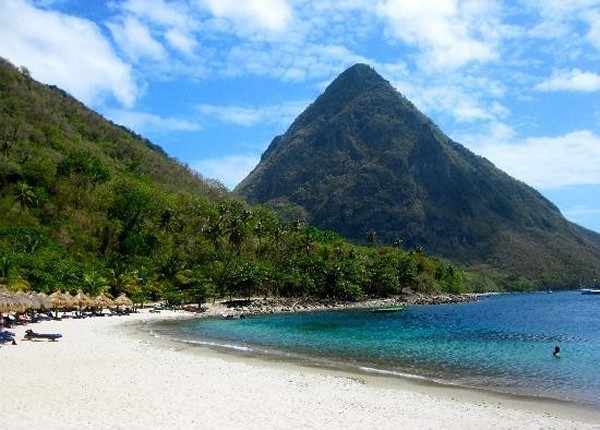
Piton Mountains
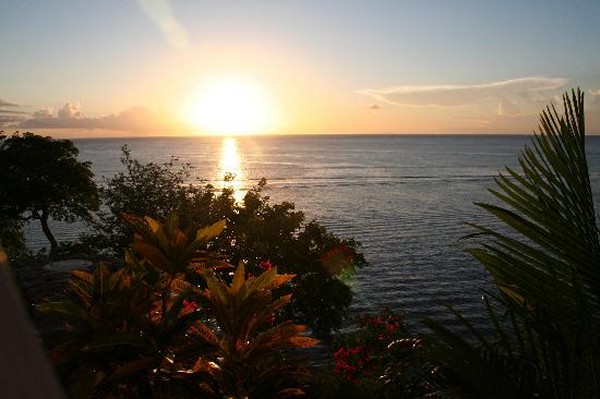
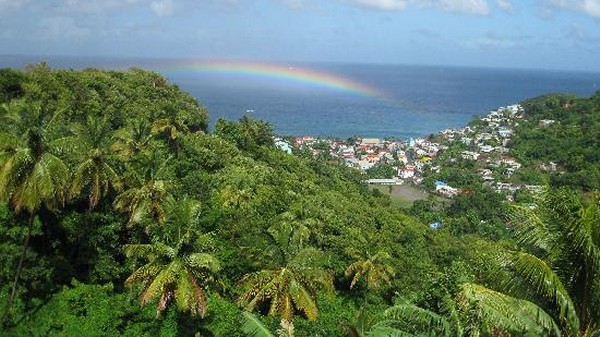
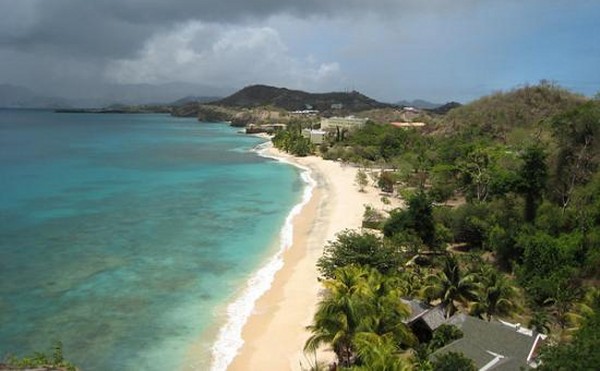
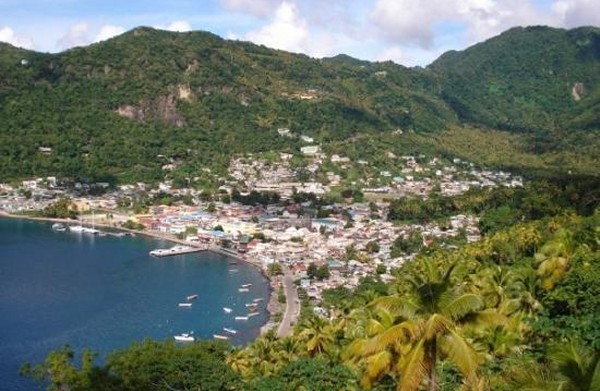
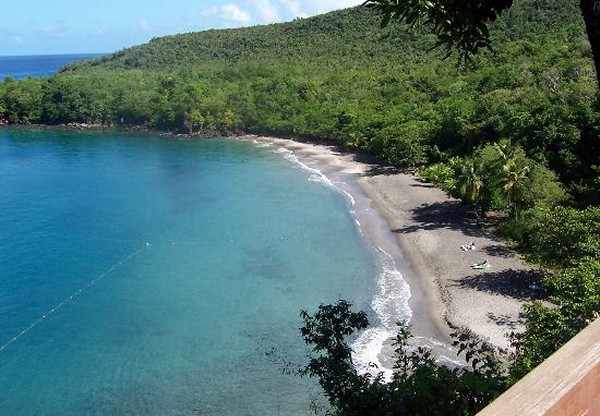
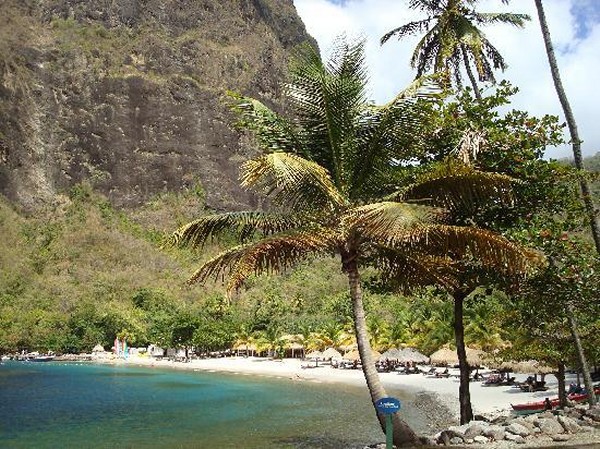
Palapas Umbrellas on the Beach
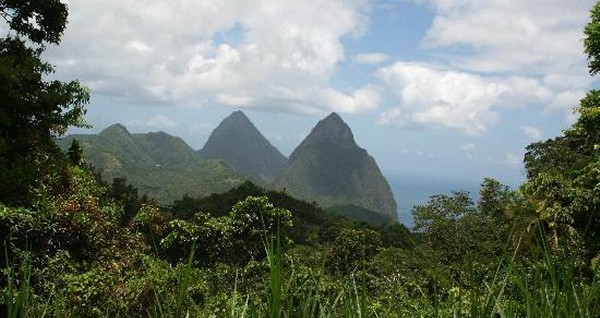
Piton Mountains
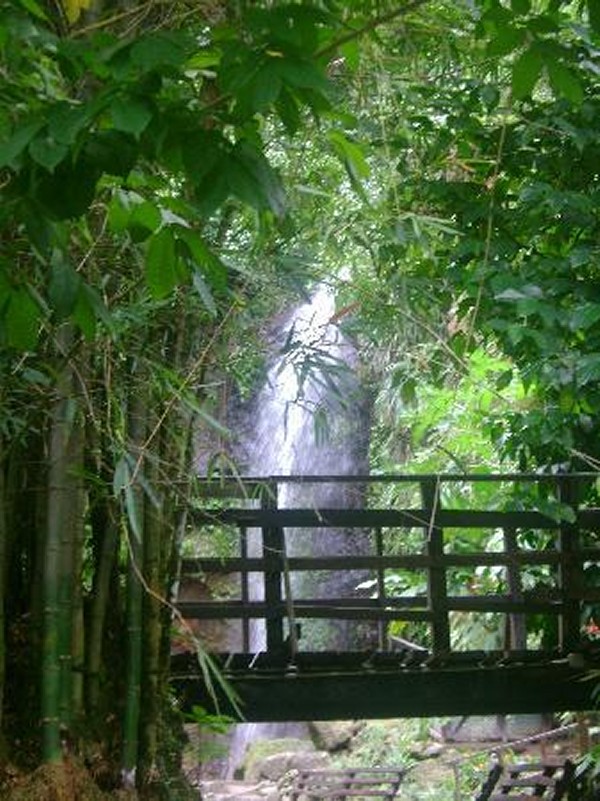
Diamond Waterfall |
From the moment you set your eyes on St. George's, you'll see why
it's considered one of the most picturesque ports in the Caribbean.
Lush vegetation, mountainous terrain and colorful colonial
architecture make up the landscape. And if the sights don't wow your
senses, the aroma will. Grenada is also filled with spice trees and
is a leading source of many different spices, including nutmeg,
cloves, ginger, cinnamon and cocoa.
Everybody who visits Grenada goes home with a basket of spices,
better than any you are likely to find in your local supermarket.
Wherever you go, spice vendors will besiege you. These hand-woven
panniers of palm leaf or straw are full of items grown on the
island, including the inevitable nutmeg, as well as mace, cloves,
cinnamon, bay leaf, vanilla, and ginger. Grenada is no grand
merchandise mart of the Caribbean like St. Thomas and St. Maarten,
but you may locate some local handcrafts, gifts, and even art. If
you like to attend Caribbean markets, head for Market Square at the
foot of Young Street.
The best buys in Grenada are batik and screen printed textiles,
locally made handicraft, leather craft, and woodcarvings. Spice
Island Jewelry sells attractive jewelry. Spices, locally made jams,
jellies, and syrups, especially nutmeg, local fresh fruits and
vegetables are other good buys. Grenada also offers fine duty-free
bargains.
St. Georges with its horseshoe-shaped harbor is a colonial-era town
that spills down a hillside. St Georges is the capital of Grenada.
It received the full brunt of Hurricane Ivan's high winds, and the
bevy of new terracotta-colored roofs stand in testament to the power
of the wind. Ivan, however, was not the first disaster to strike
this picturesque town, dominated by British colonial architecture
but with a distinctly Mediterranean feel.
Hiking
Grenada's lushness and beauty make it one of the best Caribbean
islands for hiking. For sheer scenic beauty, the number-one choice
on the island is the Lake Circle Trail, which makes a 30-minute
circuit along Grand Etang Lake, the crater of an extinct volcano
amidst a forest preserve and bird sanctuary. You are likely to see
the yellow-billed cuckoo and the emerald-throated hummingbird. The
park is also a playground for Mona monkeys. The Morne LeBaye Trail
is another easy hike, beginning at the park's forest center and
offering a view of Mount Sinai and the east coast.
Levera Park
Levera National Park, a 450-acre park has several white-sand beaches
for swimming and snorkeling. The park is also a hiker's paradise.
Levera Park contains a mangrove swamp, a lake, and a bird sanctuary,
where you might see a rare tropical parrot. Offshore are coral reefs
and sea grass beds. You will also find a beach here. Levera Beach is
located at the northeastern tip of the island. It is one of the most
beautiful beaches on Grenada, and visitors should make this a
priority stop. It is a good place to enjoy some terrific views. The
sea at this beach are not recommended for swimming because of its
rough waters, but the more adventurous visitor can try their hand at
surfing or boarding.
Grand Etang
Forest Preserve
The most popular area in Grenada for hiking and trekking is
undoubtedly the rainforest around the Grand Etang Forest Reserve,
high up in the mountains of the island's interior. Grand Etang's
varied elevations and terrains maintain several different ecological
subsystems, culminating in the elfin woodlands high up the slopes of
the reserve's central mountains. The focal point of the forest
reserve is Grand Etang Lake, which fills the crater of one of the
island's extinct volcanoes. The rainforest around the lake holds a
stupendously rich diversity of flora and fauna. Colorful tropical
birds, tiny frogs and lizards, and rare orchids punctuate the dense
rainforest vegetation, and the trails meander around the area's
stunning waterfalls as well as the azure waters of Grand Etang Lake.
Grand Etang's flora includes towering
mahogany and giant gommier trees as well as a multitude of ferns,
tropical flowers, and other indigenous plants. The lush vegetation
provides shelter for a wide variety of animals, particularly for the
island's many species of birds. The broad-winged hawk (known here as
the gree-gree), Lesser Antillean swift, Antillean euphonia,
purple-throated carib, Antillean crested hummingbird (known as the
little doctor bird), and the Lesser Antillean tanager (known as the
soursop) are all common sights. In addition, plenty of frogs and
lizards, as well as playing host to opossums, armadillos, mongooses,
and the mona monkey populate the Grand Etang. Hikes at Grand Etang
range from easy 15-minute jaunts to rigorous expeditions of several
hours.
La Sagesse Nature Center
La Sagesse Nature Center would be another
scenic stop. It is a quiet mangrove estuary along the southwestern
coast with one of the best bird-watching locales on Grenada. In
addition to the estuary, La Sagesse includes three fine beaches
edged with palm trees, a very good coral reef for snorkeling, a
pristine example of dry thorn scrub and cactus woodland, and a salt
pond. Of course, a good salt pond is the avian equivalent to a
stunning beach, and this is one very inviting salt pond. It attracts
an abundance of different species, including the brown-crested
flycatcher, Caribbean coot, green-backed and little blue heron, and
the northern jacuna. La Sagesse also maintains a restaurant that
serves very tasty lunch fare.
Grand Anse
Beach and Bathway Beach
Grand Anse Beach is the granddaddy of the best of the 45 beaches on
Grenada. It offers almost 3 miles of sugar-white sand fronting a
sheltered bay. This beach is really beautiful and many of the major
resort hotels are situated here. Many visitors never leave this part
of the island. Protected from strong winds and currents, the waters
here are relatively safe, making Grand Anse a family favourite. The
clear, gentle waters are populated with schools of rainbow-hued
fish, and palms and sea-grape trees offer shade to visitors. Water
sports on offer include water-skiing, parasailing, windsurfing, and
scuba diving. There is a multitude of vendors in this area, peddling
coral jewelry, local crafts, and the inevitable T-shirts. For the
hungry, there are numerous food and drink stands, or you can enjoy
lunch at one of the nearby resorts.
If you're looking for a pretty beach in a natural setting, you may
fall in love with Bathway Beach. Bathway Beach is on the Atlantic
coastline of Grenada, and the water gets fairly choppy at this
undeveloped beach of speckled coral sands. Although some of the
beaches in Grenada are more secluded than Bathway Beach the
combination of natural setting, personality and atmosphere provided
by this beach could be just right for you. The beaches found
throughout Grenada are usually fairly quiet, however, Bathway Beach
offers something unique. One of the main attractions at Bathway
Beach is the sheltered area where non-swimmers can bathe in relative
safety, because the waters of this Atlantic-facing beach can get
pretty rough. This beach is located on Grenada's southern coast, 1.2
miles from Levera National Park. Bathway Beach is near Morne Fendue,
so a trip into town is a definite option.
Dive Sites
There are also great opportunities for
snorkeling along Grenada’s fabulous
coastline. A particular favorite is to the Underwater Sculpture Park
at Moliniere Bay. The brainchild of Jason Taylor, a sculptor from
England, it contains a series of underwater installations on the
theme of Grenada’s history and folklore. As you snorkel or
dive your way around Moliniere Bay, shapes and bodies appear to you
from the depths. The sculptures were
transported, submerged and assembled by the Dive Grenada team. It is
quite possible to free-dive the five meters to the deepest
installation, where you will be greeted by such sights
as the Ring of Children, 26 boys and girls
slowly turning into coral, as well as the
Lost Correspondent or perhaps a few divers meandering through the
coral networks.
History
If you are interested in history, a trip to
Fort George or Fort Frederick is a must.
Fort George is situated on an elevated peninsula that commands the
harbor entrance, a position that has given the fort enormous
strategic importance since the French constructed it in the first
decade of the 18th century. Although it continues to serve as the
police headquarters, Fort George is most appreciated today for the
views that it offers to sightseers. Much of its elaborate colonial
structure remains intact, and part of the pleasure of a visit is
rambling around among the passages and stairs of the ancient stone
fortifications. Fort George still maintains a battery of old
cannons, which are used on special occasions to fire off a
resounding salute. In the 1980s, Fort George once again played a
prominent role in Grenadian history as the site of the assassination
of Maurice Bishop, along with several members of his cabinet. In
1983, the fort was bombed by American troops.
Fort Frederick was started by the French to secure their position
after they had so easily captured the island from the British in
1779. There isn't a whole lot to do or see on Fort Frederick itself.
But there are many things to see from Fort Frederick. Perched atop
Richmond Hill at the center of St. George's, Fort Frederick is a
smaller and more recent complement to the imposing Fort George.
Built by the British, it was completed in 1791, during the French
Revolution.
|
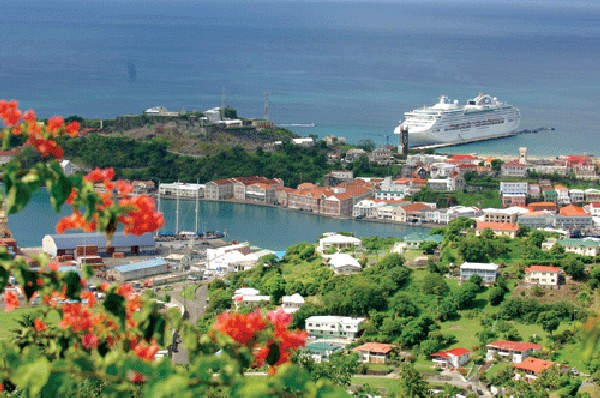
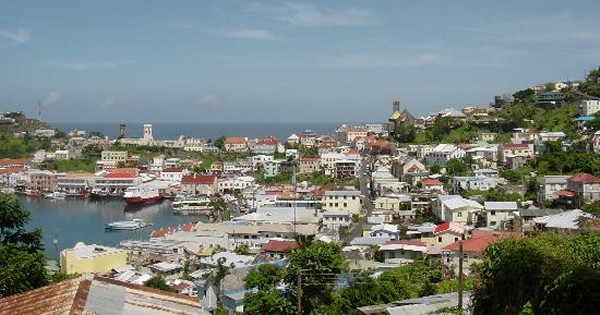
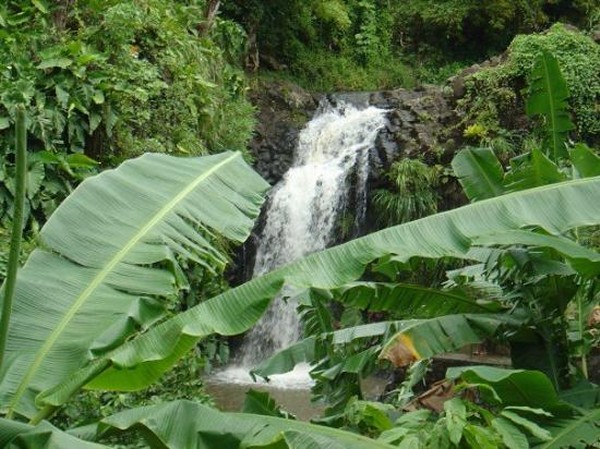
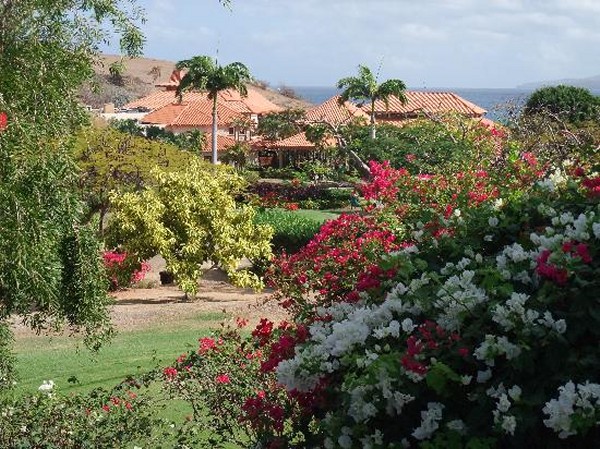

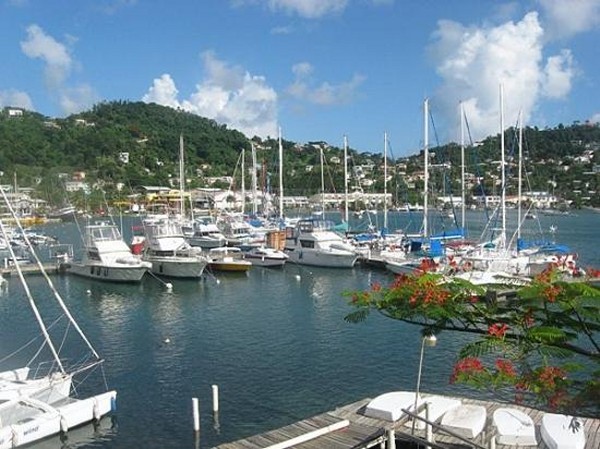
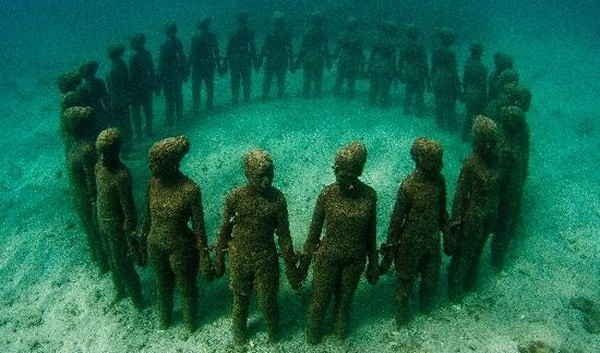
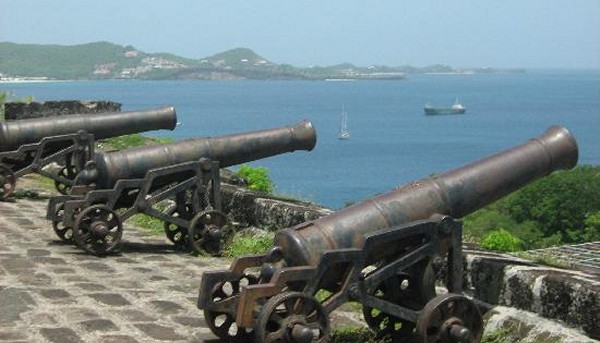 |
 |
About Royal
Caribbean's
Serenade of the Seas
This ship is a member of the Radiance-class. It is a
mid-sized ship, 90,000 tons with a 2100 passenger capacity.
It's most interesting distinction is the nearly three acres
of exterior glass employed in its design - including glass
elevators with ocean views - that incorporate the outdoors
quite beautifully onboard.
The effect is simply dazzling - and
there are remarkable views from nearly every public room.
The decorating scheme itself emphasizes elegance, grace, and
beauty, and creates quite a harmonious environment. The ship
is overflowing with glass and natural light, and the center
of it all is a ten-story all-glass atrium, that features
live music and dancing every evening.
|
In addition to the beauty, the ship
has a Rock Climbing Wall, Both Basketball and Volleyball
Courts, Golf Simulator, Day Spa and Fitness Center, Indoor
Solarium along with two Specialty Restaurants.
We sailed on the Serenade's sister ship, The Radiance on our
2005 Alaskan voyage.
Check out our pictures!
Group Hotel
Accommodations in San Juan
In addition to the cruise, I will be offering both pre and
post group hotel packages in San Juan, Puerto Rico. More
info to follow shortly on our website.
Deposits
If you are interested in joining the adventure, please
complete the registration form ASAP. A $100 first deposit
will hold your space until December, when the full deposit
of $250 will be due. Final payment is due by February 14,
2011.
|
|
|
|